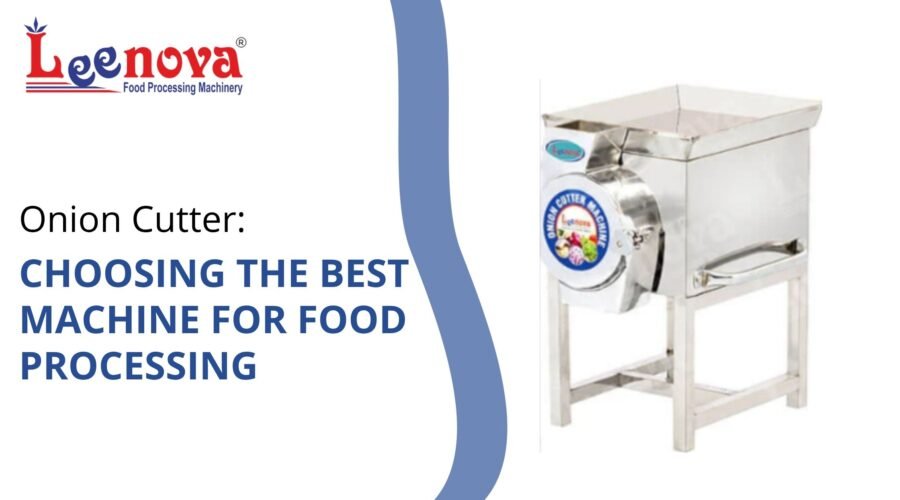Introduction
Commercial kitchens waste 40-60 minutes daily on manual onion prep. Staff tears, inconsistent cuts, and slow throughput kill efficiency during peak hours. The wrong onion cutter compounds these problems through frequent breakdowns, expensive blade replacements, and output that doesn’t match claimed capacity.
The right machine cuts prep time by 75% while delivering uniform slices or dice that cook evenly. Most buyers focus on upfront cost and miss critical factors like actual throughput under continuous use, blade longevity with different onion varieties, and versatility for other vegetables.
This guide breaks down capacity ratings, blade configurations, motor specifications, and maintenance requirements. Match these factors to kitchen volume, staff skill level, and budget constraints to avoid costly mistakes.
Understanding Machine Capacity Ratings
Advertised vs Real-World Output
Manufacturers rate capacity under ideal conditions: medium-sized onions, experienced operators, no cleaning breaks. A machine rated for 100 kg/hr typically delivers 70-80 kg/hr in actual kitchen use.
Small machines (0.5 HP motors) handle 60-100 kg/hr—suitable for restaurants serving 100-150 meals daily. Medium units (1-2 HP) process 80-150 kg/hr for operations serving 200-400 meals. Industrial models (2+ HP) reach 600-1000 kg/hr for central kitchens and food manufacturers.
Peak Hour Demands
Calculate actual needs based on peak service periods, not daily totals. A restaurant using 50 kg onions daily but needing 30 kg prepped before lunch service requires higher capacity than one spreading prep across the day.
Motor Power and Performance
Half-Horsepower Reality
Most 0.5 HP machines struggle beyond 90 minutes of continuous operation. Motors overheat, forcing 15-20 minute cooling breaks that destroy prep schedules. These work for operations with light, distributed prep needs—not high-volume batch processing.
One-horsepower units run 2-3 hours continuously before needing breaks. Two-horsepower models handle 4+ hours, making them suitable for central kitchens doing all-day prep.
Single Phase Limitations
Single-phase motors (standard household power) max out around 1.5 HP effectively. Larger operations need three-phase power for 2+ HP motors. Verify electrical infrastructure before ordering high-capacity machines.
Blade Configuration and Cut Quality
Thickness Adjustment Range
Most machines offer 4-15mm cutting range through interchangeable screens or grids. Restaurant kitchens need 2-3 screen sizes: 6-8mm for sautéing, 10-12mm for grilling, 14mm for dicing.
Fixed-blade units cost less but lock operations into single thickness. Adjustable systems add 20-30% to purchase price but eliminate the need for multiple machines.
Slice vs Dice Capability
Basic slicers produce uniform rounds—adequate for burgers and sandwiches. Combination units slice and dice through secondary cutting grids. This versatility matters for kitchens preparing curries, stir-fries, and sauces requiring specific dice sizes.
Multi-Vegetable Versatility
Beyond Onions
Most onion cutters process tomatoes, cucumbers, carrots, ginger, and chilies. This multi-functionality justifies higher investment by replacing 2-3 specialized tools.
Hard vegetables like carrots wear blades 40% faster than soft onions. Operations cutting high volumes of mixed vegetables need more frequent blade maintenance.
Performance Differences
Onion capacity doesn’t translate directly to other vegetables. A 70 kg/hr onion machine typically processes only 30-45 kg/hr chilies due to density differences. Plan capacity accordingly when cutting multiple items.
Maintenance and Operating Costs
Blade Replacement Economics
Commercial blades last 3-6 months depending on usage intensity and vegetable types. Replacement sets cost 8-15% of machine price. Budget ₹2,000-₹5,000 annually for blade replacement in moderate-use scenarios.
Stainless steel construction requires minimal maintenance beyond blade replacement. Clean after each shift to prevent buildup that accelerates wear.
Hidden Costs
Screen-based systems need replacement screens every 4-6 months at ₹800-₹1,500 each. Machines requiring multiple screens for different cuts increase ongoing costs.
Material Construction Standards
Food-Grade Requirements
All food-contact surfaces must be stainless steel grade 304 or higher. Cheaper machines use food-grade plastic that stains, retains odors, and cracks under continuous use.
Body construction matters less than cutting components. Mixed construction (SS cutting chamber, powder-coated body) cuts costs without compromising hygiene.
Matching Machine to Operation
Choose based on these priorities:
Small restaurants and cafes (50-100 meals/day)
- 0.5-1 HP machines
- 60-100 kg/hr capacity
- Single thickness acceptable
- Manual feed systems sufficient
Medium operations (100-300 meals/day)
- 1-2 HP motors
- 100-150 kg/hr capacity
- Multi-thickness capability
- Continuous-duty rating required
Large kitchens and processors (300+ meals/day)
- 2+ HP three-phase motors
- 200-1000 kg/hr capacity
- Automatic feed systems
- Industrial-duty construction
FAQs
What capacity do I actually need for a 200-seat restaurant?
Plan for 1 kg onions per 8-10 meals served. A 200-seat restaurant turning tables twice needs roughly 40-50 kg daily. Choose a machine rated for 100 kg/hr minimum to complete prep in 30-45 minutes.
Can one machine replace all manual cutting?
Yes, for onions, tomatoes, cucumbers, and similar round vegetables. Leafy vegetables, irregular shapes, and decorative cuts still need manual prep. Expect 60-70% reduction in total cutting time, not complete elimination.
How long do blades stay sharp with daily use?
Three to six months with proper cleaning and single-vegetable use. Mixed vegetable cutting shortens lifespan to 2-4 months. Cutting hard vegetables exclusively reduces blade life by 40%.
Do semi-automatic machines require special skills?
No specialized training needed. Staff learn safe operation in 15-20 minutes. Focus training on proper cleaning and blade inspection rather than cutting technique.
What’s the real power consumption cost?
A 1 HP machine running 2 hours daily consumes roughly 1.5 kWh or ₹12-₹15 daily at commercial rates. Annual power cost runs ₹4,000-₹5,500—negligible compared to labor savings.
Conclusion
Capacity ratings, motor durability, and blade versatility determine long-term value more than purchase price. Match machine specifications to actual peak-hour needs, not daily totals. Factor blade replacement costs and multi-vegetable capability into the decision.
Calculate the break-even point comparing machine cost against labor hours saved. Most commercial operations recover investment within 4-6 months through faster prep and reduced waste.
Leenova Kitchen Equipments supplies commercial-grade onion cutters engineered for continuous-duty commercial environments. Our technical team helps calculate actual capacity requirements based on your menu, service volume, and prep schedules—not generic recommendations. Visit leenovakitchenequipments.com or contact us for specification matching and capacity planning for your specific operation.


